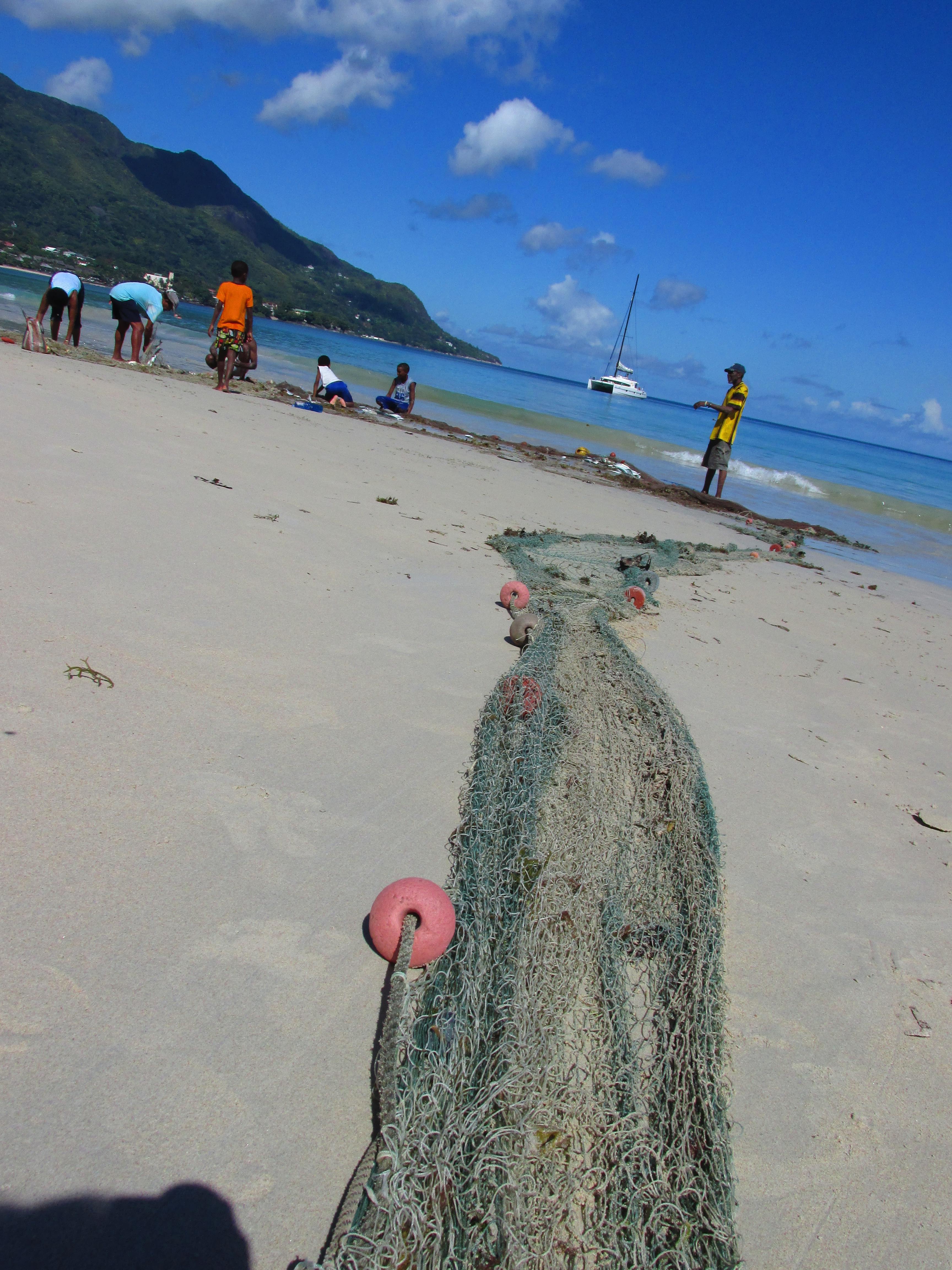A bit of a sad start
I’m really lucky to be back on D’Arros Island, which could definitely be called a paradise nestled among the Seychelles islands. This is my third field trip out here dedicated to research on stingrays. However, this trip started out on a bit of a sad note.
During our stay on the main island of Mahé, I happened to be on the beach at the same time as some local fishermen who were bringing in their nets. Much to my dismay, they had caught a juvenile eagle ray. It was a beautiful creature with a golden sheen and little white spots on its dark body. Unfortunately, its beauty didn’t save it and the fisherman used its own sting to poison the creature.
Now, this is a complex issue – artisanal fishing always is. These fishermen rely on what they catch to make a living. However, we have to make sure that what they catch is sustainable otherwise they’re shooting themselves in the foot over the long term.
With stingrays, finding this balance is not as easy as with bony fish. Although most bony fish grow quickly, reproduce at an early age and give birth to lots of young, stingrays are the opposite. They grow very slowly, mature only at a late age and give birth to very few young. All of these factors reduce their potential to sustain fishing pressure.
Unfortunately, local fishermen do not understand this or they simply cannot afford to care. Stingrays are caught in artisanal fisheries throughout the world, and their populations have been declining. This is why the work that I do at St Joseph Atoll, which neighbours D’Arros Island, as well as all the other research currently happening on stingrays, is so important. I’m so happy to be playing a part in increasing the knowledge we have about these species to help sustain future populations.

